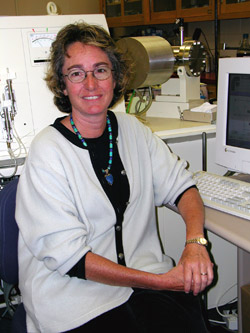Reevaluating Planetary Protection Through Island Biogeography Insights

In the field of astrobiology, the concept of planetary protection has garnered renewed attention as researchers seek to mitigate the risks of biological contamination during space exploration. A recent study, "Rethinking Planetary Protection: An Island Biogeographical Analysis," authored by Keith Cowing, delves into this critical issue by applying the principles of island biogeography to interplanetary contexts. Published in the Journal of the Royal Society on June 30, 2025, the study emphasizes the need for a comprehensive understanding of contamination risks associated with space missions.
The study's premise hinges on a historical event that occurred on November 14, 1963, when Icelandic fisherman observed a volcanic eruption that resulted in the formation of Surtsey Island off the coast of Iceland. This event serves as a metaphor for how isolated ecosystems can develop in response to external influences, analogous to how planets might evolve in isolation within the cosmos. Dr. Cowing argues that traditional models of equilibrium populations, which rely on immigration and extinction rates, may not adequately apply to the vast distances and unique conditions of space travel.
Cowing, who is an Explorers Club Fellow and former NASA Space Station Payload Manager, posits that the mean-time to extinction—derived from growth and death rates—can provide a more reliable framework for assessing contamination risks in planetary protection efforts. He suggests that these insights could inform future research directions in the field, particularly as humanity prepares for manned missions to Mars and beyond.
According to Dr. Sarah Johnson, Professor of Astrobiology at Stanford University, "The application of island biogeography to planetary protection is an innovative approach that allows us to reconsider how we might prevent the transfer of Earth-based microbes to extraterrestrial environments. It highlights the importance of understanding ecosystem dynamics in isolated settings, even when those settings are on a planetary scale." This perspective aligns with the ongoing discussions within the scientific community regarding the ethical implications of contaminating other celestial bodies.
The implications of this research extend beyond theoretical discussions. As the number of planned space missions increases, including NASA's Artemis program aimed at returning humans to the Moon and exploring Mars, the risk of contamination becomes a pressing concern. The U.S. National Academies of Sciences, Engineering, and Medicine's 2022 report on planetary protection emphasizes the necessity of developing robust policies that can adapt to evolving scientific knowledge and exploration capabilities.
Moreover, international collaboration is critical in addressing planetary protection. According to Dr. David Anderson, Senior Researcher at the European Space Agency, "As we venture further into the solar system, it is essential that we establish a global consensus on planetary protection protocols to ensure that we respect the integrity of other planets and moons. Failure to do so could have irreversible consequences for potential extraterrestrial life forms."
The application of island biogeography to planetary protection is not without its critics. Some experts argue that such models may oversimplify the complexities of biological interactions in extraterrestrial environments. Dr. Emily Tran, a Biogeochemist at the University of California, Berkeley, states, "While drawing parallels between islands and planets is thought-provoking, we must be cautious about the assumptions we make regarding microbial survival and transfer in space. More empirical data are needed to validate these models."
As researchers continue to explore the intersection of astrobiology and planetary protection, the insights derived from island biogeography may pave the way for more nuanced strategies to prevent contamination. The future of space exploration hinges on our ability to navigate these ethical and scientific challenges effectively.
In conclusion, Cowing's study serves as a vital contribution to the discourse on planetary protection, prompting a reevaluation of established paradigms. As humanity stands on the brink of interplanetary exploration, prioritizing robust planetary protection strategies will be essential in safeguarding both Earth and other celestial bodies from biological contamination. The global scientific community must unite to foster responsible exploration practices that honor the integrity of our universe, ensuring that we do not repeat the ecological missteps made on our home planet.
Advertisement
Tags
Advertisement





